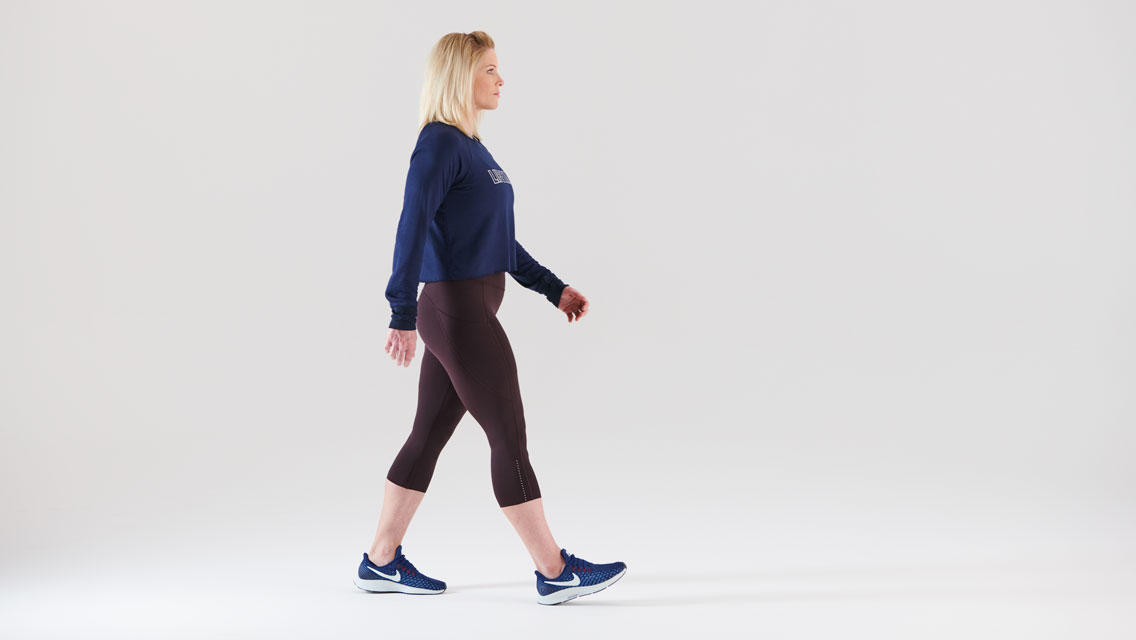Going for a walk is one of the most powerful things you can do for your physical and mental health, but walking forward isn’t the only way to get its benefits. Backward walking, also known as retro walking, is an underrated way to mix up a simple activity many of us do every day.
The difference between walking forward and walking backward probably seems obvious: Instead of planting one foot in front of the other and leading with the heel, backward walking involves reaching your leg behind you and stepping down toe-first.
This isn’t only a shift in direction. Stepping backward changes how the muscles of the legs and core engage, providing a different set of benefits than forward walking offers.
Walking backward engages the glutes and anterior tibiales, or shins, as well as muscles in the feet and ankles. It also mitigates the impact of each step, reducing the sheer force exerted on the knees and lower back.
Reversing your stride demands a more erect posture than the slight frontward lean of forward walking, which creates a new challenge for muscles in the abdomen and back while also stretching the hip flexors. One study even found that backward walking down a steep slope can alleviate symptoms of plantar fasciitis.
In addition to offering these stability-building perks, backward walking has been shown to improve balance, coordination, and gait. This is due in part to the fact that the visual cues we are accustomed to (and often take for granted) when walking forward are removed. Our brains have to work harder to keep us upright and safe, a boon to cognitive function.
That said, lacking a clear view of where you’re stepping or headed is also the greatest pitfall of this walking variation. Beginners are advised to start slow, moving in a space with few hazards or obstacles. A clear hallway, a treadmill with handrails (and set to a slow speed), or a soft patch of grass are great places to start.
With practice, your balance and overall proprioception — your sense of your spatial orientation — will improve. You can then walk backward for longer distances or add retro-walk intervals to your regular walk.
To progress the challenge, try walking backward uphill or on a treadmill set at an incline. (If you need to go downhill, forward walking is the safer option, at least until you are very comfortable walking backward on a flat surface and on an incline. Even then, make sure your surroundings are safe and clear.)
A more advanced progression would include jogging or running backward for short stretches. This might be especially useful training for football, soccer, and rugby players who routinely run backward during games.
Instructions
- Initiate the step backward with your big toe.
- Land on the ball of your lead foot, then roll through the foot toward your heel.
- Maintain an upright posture throughout the movement.
- Allow your arms to swing naturally and use them for balance.
- Turn your head from side to side, as needed, to maintain a view of where you are walking (and what you might be walking toward).
Backward Jogging Demo






This Post Has One Comment
I have found walking backwards on our street (no sidewalks) to be much easier if I walk WITH the flow of traffic so I can see cars approaching me. Also, the curb on my left is a great guide for my foot placement. I ALWAYS walk against car traffic when walking forward. Ear buds, dog walking, and other distractions make it dangerous to walk forward on the right-hand side of the street. One needs to be able to make eye contact with oncoming drivers.